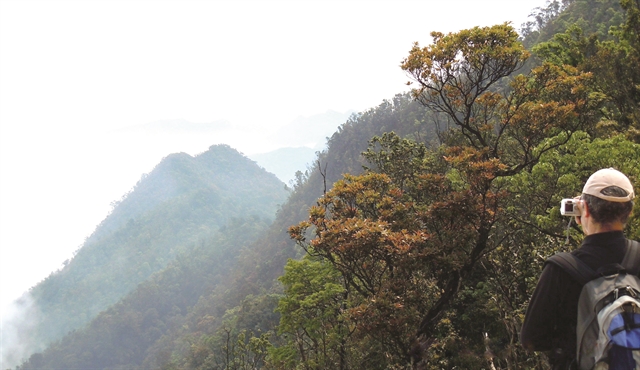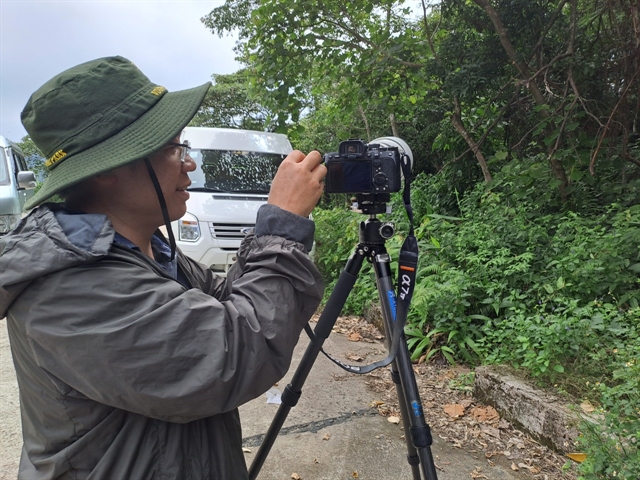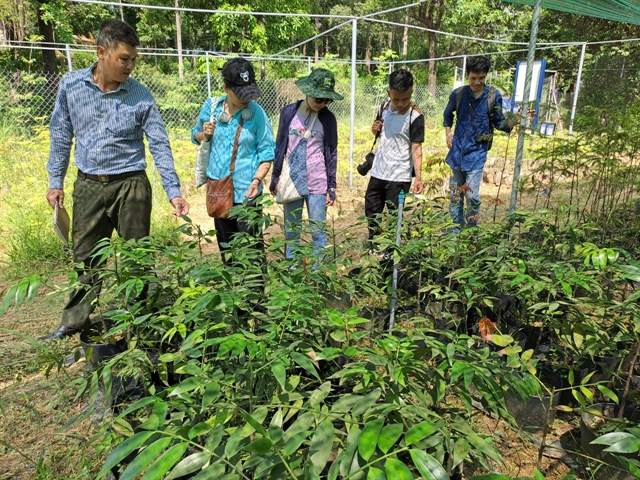A representative from PanNature suggested clearly defining the non-profit status of science and technology organizations to facilitate research, technology transfer, and application. This clarity would also enhance international collaboration and attract funding.

Stunning Bach Ma National Park conserves unique biodiversity
Bach Ma National Park, recognised as an ASEAN Heritage Park in 2022, holds the world’s only breeding area for the saola, a critically endangered species. The park is also home to Viet Nam’s second bear rescue centre.

The Bach Ma National Park, spanning an area of over 37,000 hectares and sharing the climate and natural features of the northern and southern regions, has been building a rich biodiversity conservation and eco-tourism site in the central province of Thua Thien Hue.
The park, recognised as an ASEAN Heritage Park in 2022, holds the world’s only breeding area for the saola, a critically endangered species, also known as the Asian unicorn. The park is also home to Viet Nam’s second bear rescue centre.
The director of the park, Nguyen Vu Linh, said, the park and the Animals Asia (an NGO) had been building a bear rescue centre covering 12.7ha for launch in 2026. It will provide a safe shelter for at least 300 captive bears before releasing them back to the wild.

The diverse ecosystem in the park is also home to 1,700 fauna and flora species, of which 69 are listed in Viet Nam’s Red Data Book, a seven per cent share of the total species listed in Viet Nam.
A park report said about 15 troops (170 individuals) of red-shanked douc langurs – an endangered primate species found only in Viet Nam and Laos – as well as 363 bird species could also be found in the park.
Tran Hue, a ranger at the park, said strict control and patrols were joining with the community living in a buffer zone at the park, improving the quality of forest conservation and reducing harmful violations in protected areas.
“Our team has been assigned a joint-patrol with the community members on a 32-ha protection area in the park. Local ethnic groups have an instinctive understanding of these jungle patrol trips, supporting rangers tracing any illegal violations in the forest,” Hue said.
The park provides an annual financial assistance of VND1 billion (US$43,000) for local communities for livelihood changes, and over 100 households have been assigned to protect and patrol more than 3,000ha of forest, according to the park’s management board.
Activities in wildlife protection
Nguyen Dai Anh Tuan, vice director of the provincial department of Agriculture and Rural Development, who has nearly 40 years of experience in conservation and forest protection, said efforts had been made by local rangers and communities in preserving the remaining biodiversity at the park and other protected areas of the province, but it had been challenging in the current economic environment.
“Manpower, facilities, equipment and supportive policies for rangers and special forces of forest protection are major concerns that need long-term plans and policymaking,” he said.
Tuan is one of the few people to have seen the critically endangered species of saola in real life when he saw four individuals – a newborn baby, a mother-to-be and two adults during trips in the jungle more than two decades ago.

According to a report from WWF-Vietnam, biologists have only photographed the world’s rarest mammal species five times in the wild in the last 25 years, all by camera traps – twice in Laos and three times in Viet Nam. The most recent camera trap photos were taken in 2013 when the WWF captured images of the saola in a nature reserve in central Viet Nam.
Since the species’ discovery in 1992, only about 10 have ever been captured alive, all by local villagers in Laos and Viet Nam. Without professional veterinary and husbandry care, the longest that any of the animals lived was a few months. The last saola known to be captured alive was in 2010 in a village in Laos. It died in less than a week.
Tuan said he still dreamt that he would see the saola living in the jungle again one day.
He said that local people must report any forest and wildlife violations through a hotline that helps authorities prevent poaching and trafficking of wild animals.
The Bach Ma National Park, in cooperation with WWF-Vietnam and PanNature – a Vietnamese non-profit conserving nature – have been carrying out different activities in wildlife protection, education, press trips, and community awareness over the past decades.
Bich Ngoc from PanNature said about 200 Vietnamese journalists nationwide had joined in the “Partners against Wildlife Crime” in Asia project by leveraging civil society partnerships to increase the effectiveness of government action, as funded by the European Union.
Ngoc said the training courses helped reporters share their experience and create reports and surveys on wildlife protection and conservation of nature, with senior wildlife experts and managers.
Sustainable livelihood solutions
Luong Viet Hung, manager of the Carbon sink and biodiversity protection project (CarBi) in the Truong Son Annamites, said local authorities, rangers and WWF-Vietnam had been effective in boosting protection of wildlife.
He said 146,000 snares had been dismantled, while 1,600 huts of poachers in the jungle were destroyed over 31,000ha in the province as well as neighbouring Quang Nam Province over the last decade.
“WWF-Vietnam has kept supporting the Bach Ma National Park in jungle patrol, and enhancing the capabilities of ranger forces through training courses on biodiversity surveys, IT applications in wildlife species identifications as well skills on wildlife crime investigations and reports,” Hung said.
“Camera trap networks have been installed widely in protected areas in identifying the endangered species in nature, and supporting sustainable livelihood solutions for the community in the buffer zone in reducing illegal wildlife hunting and trading,” he said.

He said the CarBi project helped set up a kid’s ranger team to improve awareness and communication for the local community on wildlife protection.
Phan Ve, an employee at the park’s rescue centre, said various medicinal herbs in the wild could be planted in a forest garden for sale in the market.
The park has piloted a project on medicinal herb gardening to improve the livelihoods of residents in the buffer zone, alongside the planting of red leaf tree species and the breeding of pheasants for conservation.
“We have been gardening wild tea and medicinal herb species as a pilot project and expanding their planting at households’ properties in buffer zone communities. This will help local residents, who live from forestry exploitation, gradually change their livelihoods sustainably,” Ve said.

“Some orchids and wild trees have been planted as a trial to provide for urban parks and improve incomes of local residents. It also helps conservation of the park in the future.”



